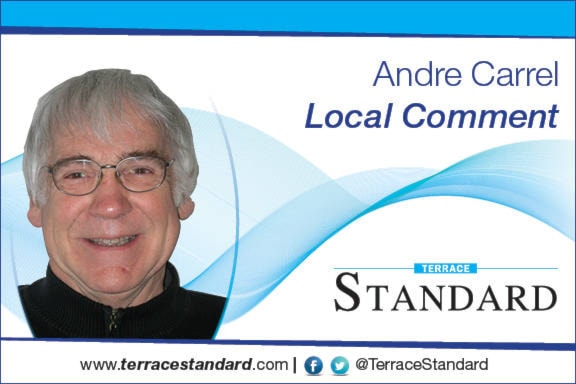As the title asks, this question was the subject of one of my first contributions to the Terrace Standard; an answer appears as remote today as it was then.
The Regional District of Kitimat-Stikine published an informative set of fact sheets on the subject of local governance for Thornhill. The options are to stay the course, incorporate as a stand-alone municipality, or join the City of Terrace. The first two options are for Thornhill residents to debate and decide. As to the third option, residents of Thornhill may apply, but the responsibility for the decision rests with the council and with the residents of the City of Terrace.
The Regional District’s Fact Sheet #1 refers to “a merger (amalgamation) with the City of Terrace.” That is an unfortunate choice of words as the process would be neither a merger nor an amalgamation. Thornhill is a cultural community, a social community. Thornhill (Electoral Area E) has the characteristics of a provincial voting constituency with none of the trappings of a self-governing unit. Thornhill does not have a stand-alone governing infrastructure, political or administrative. Without that infrastructure, what is there to amalgamate with Terrace’s governing infrastructure? If Thornhill residents want to gain control of their own local affairs, their only option is to incorporate their community as a stand-alone municipality. If what Thornhill residents want is municipal status without the responsibilities that go with establishing a stand-alone municipality, they may petition the City of Terrace to apply for an extension of its municipal area (Local Government Act s. 20). If Council were in agreement, it would have to obtain the approval of Terrace electors for such an extension, and at the Minister’s discretion, Thornhill electors would also get to vote on the proposal.
We – Terrace and Thornhill (and Kitselas and Kitsumkalum, as Steve Smyth has suggested) – could be governed by legislation designed and structured to serve our area’s combined needs and aspirations. The City of Vancouver has a Charter to govern its affairs, statutory provisions distinct from what the Community Charter mandates for most other municipalities. We could ask the Province to create legislation designed just for us.
Negotiations aimed at writing local governance legislation to consolidate the communities of Terrace, Thornhill, Kitselas and Kitsumkalum into a single local government unit would present a challenge. I can imagine an intricate process of the kind experienced in the negotiations that culminated in the 1998 Nisga’a Referendum.
The economic consequences of Terrace absorbing Thornhill would be significant. Fact Sheet #6 notes that “The amount currently paid by residents of Thornhill [for local services] are (sic) well below total cost of the services provided.” The shortfall is covered by the Province, thus “Service levels are determined by the province and the RCMP not the Regional District.” As a municipality Thornhill would determine service levels – and pay for them.
If Terrace were to absorb Thornhill, the financial responsibility for street plowing and fixing potholes in Thornhill would rest with City as a whole. The population of Terrace is about three times that of Thornhill. If Terrace were to extend its boundaries Thornhill property owners would be paying more for their local services without gaining appreciably more control over service levels and quality.
Terrace and Area E now collaborate in recreation, cemetery, solid waste, transit, and library. If Thornhill were to incorporate effective collaboration could continue.
